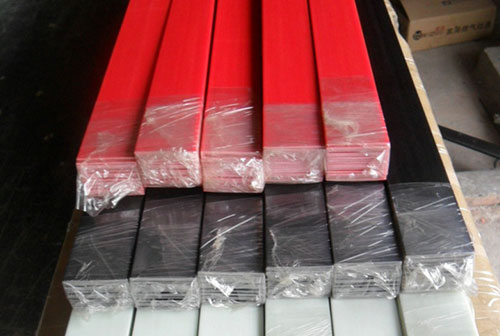Henan Zhongsheng is a leading manufacturer of fiberglass sheets in China. We have over 20 years of experience in the industry and a deep understanding of the fiberglass sheet manufacturing process. In this article, we will take you through the different steps involved in producing high-quality fiberglass sheets.
The Fiberglass Sheet Manufacturing Process:
The fiberglass sheet manufacturing process can be broadly divided into four main stages:
Pultrusion:
Pultrusion is the primary method for producing fiberglass sheets. It involves continuously pulling a resin-impregnated roving through a heated die. The die shapes the roving into the desired cross-sectional profile of the fiberglass sheet.
Resin Application:
The resin used in fiberglass sheets plays a crucial role in binding the reinforcing fibers together and providing the sheet with its desired properties. The resin is typically applied to the roving before it enters the pultrusion die.
Curing:
After the resin-impregnated roving exits the pultrusion die, it enters a curing oven. The curing process involves heating the resin to a specific temperature for a specific time, causing the resin to harden and solidify.
Finishing:
Once the fiberglass sheet has cured, it undergoes a finishing process to remove any imperfections and enhance its appearance. The finishing process may include cutting, sanding, and polishing.
Factors Affecting the Quality of Fiberglass Sheets:
The quality of fiberglass sheets is influenced by several factors, including:
Resin type and properties: The type of resin used and its properties significantly impact the strength, durability, and chemical resistance of the fiberglass sheet.
Fiber type and arrangement: The type of reinforcing fibers used (e.g., glass, carbon) and their arrangement within the sheet affect its mechanical properties, such as tensile strength and flexural modulus.
Curing conditions: Proper curing temperature and duration are essential for ensuring complete polymerization of the resin and achieving the desired mechanical properties of the fiberglass sheet.
Finishing process: The finishing process plays a role in removing any surface defects and ensuring a smooth, consistent finish.
Applications of Fiberglass Sheets:
Fiberglass sheets find diverse applications across various industries, including:
Construction: Fiberglass sheets are used in roofing, flooring, wall panels, and other construction applications due to their strength, durability, and lightweight properties.
Marine: Fiberglass sheets are widely employed in boat hulls, decks, and other marine components due to their resistance to water, corrosion, and harsh weather conditions.
Transportation: Fiberglass sheets are used in truck bodies, bus interiors, and other transportation applications due to their impact resistance, durability, and lightweight properties.
Industrial: Fiberglass sheets are used in electrical insulation, machine guards, and other industrial applications due to their electrical insulating properties, strength, and chemical resistance.
Conclusion:
The manufacturing process of fiberglass sheets involves several critical steps, including pultrusion, resin application, curing, and finishing. The quality of the fiberglass sheet is influenced by various factors, such as resin type, fiber properties, curing conditions, and finishing processes. Fiberglass sheets find diverse applications across various industries due to their unique combination of properties, including strength, durability, lightweight, resistance to water, corrosion, and chemicals.
Contact Us:
If you are looking for high-quality fiberglass sheets for your application, contact Henan Zhongsheng today. We offer a wide range of fiberglass sheets in various sizes, thicknesses, and properties to meet your specific needs. We can also provide customized fiberglass sheets tailored to your unique requirements.
 +86 15303735673
+86 15303735673 Jessica@frpzs.com
Jessica@frpzs.com
 Technical Data
Technical Data














